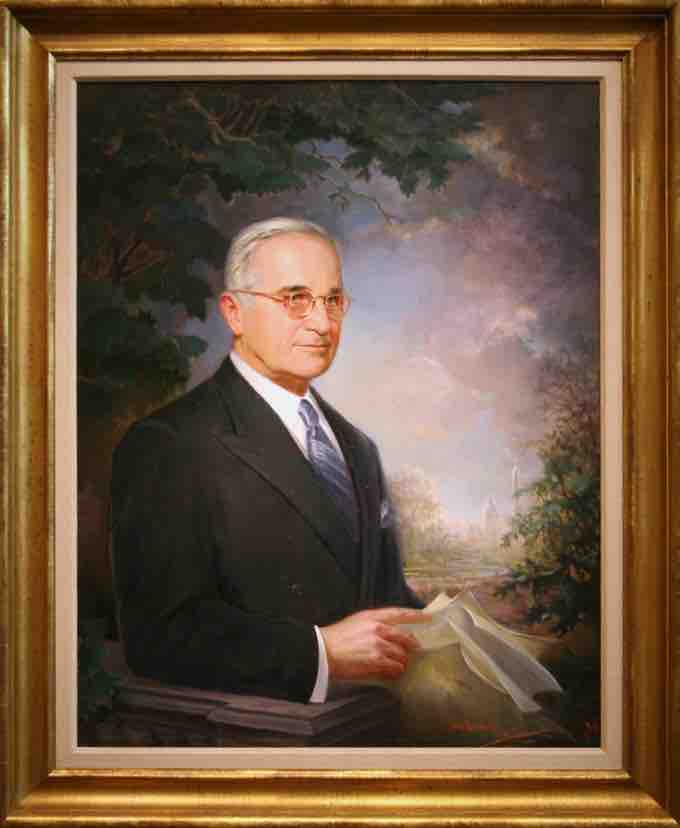History of the Labor-Management Relations Act
Enacted June 23, 1947, the Labor-Management Relations Act (informally the Taft-Hartley Act) is a United States federal law that monitors the activities and power of labor unions. The act, still effective, was sponsored by Senator Robert Taft and Representative Fred A. Hartley, Jr. and became law by overriding U.S. President Harry S. Truman's veto on June 23, 1947 ; labor leaders called it the "slave-labor bill," while President Truman argued that it was a "dangerous intrusion on free speech," and that it would "conflict with important principles of our democratic society. " Nevertheless, Truman would subsequently use it 12 times during his presidency. The Taft–Hartley Act amended the National Labor Relations Act (informally, the Wagner Act), which Congress passed in 1935. The principal author of the Taft–Hartley Act was J. Mack Swigert of the Cincinnati law firm Taft, Stettinius & Hollister.

President Harry S. Truman
A portrait of former U.S. President Harry S. Truman who failed in his attempted veto of the 1947 Labor-Management Relations Act.
Taft–Hartley was one of more than 250 union-related bills pending in both houses of Congress in 1947. As a response to the rising union movement and Cold War hostilities, the bill could be seen as a response by business to the post-World War II labor upsurge of 1946. During the year after D-Day, more than five million American workers were involved in strikes, which lasted on average four times longer than those during the war. The Taft–Hartley Act was seen as a means of demobilizing the labor movement by imposing limits on labor's ability to strike and by prohibiting radicals from their leadership.
Purpose of the Labor-Management Relations Act
The National Labor Relations Act was enacted for a number of reasons, including to promote the full flow of commerce, prescribe the legitimate rights of both employees and employers in their relations affecting commerce, provide orderly and peaceful procedures for preventing the interference by either with the legitimate rights of the other, protect the rights of individual employees in their relations with labor organizations whose activities affect commerce, define and proscribe practices on the part of labor and management which affect commerce and are inimical to the general welfare, and to protect the rights of the public in connection with labor disputes affecting commerce.
The amendments enacted in the Labor Management Relations Act (Taft-Hartley) added a list of prohibited actions, or unfair labor practices, on the part of unions to the NLRA, which had previously only prohibited unfair labor practices committed by employers. The Taft–Hartley Act prohibited jurisdictional strikes, wildcat strikes, solidarity or political strikes, secondary boycotts, secondary and mass picketing, closed shops, and monetary donations by unions to federal political campaigns. It also required union officers to sign non-communist affidavits with the government. Union shops were heavily restricted, and states were allowed to pass right-to-work laws that outlawed closed union shops. Furthermore, the executive branch of the Federal government could obtain legal strikebreaking injunctions if an impending or current strike imperiled the national health or safety, a test that has been interpreted broadly by the courts.